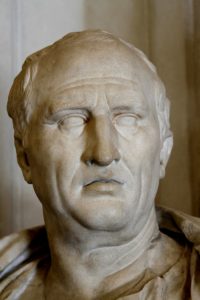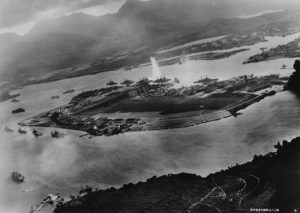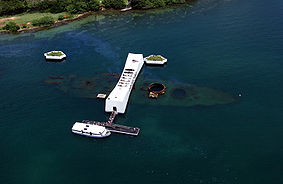 On this day in 43 BC, Roman statesman, orator, lawyer and philosopher Marcus Tullius Cicero was executed by soldiers operating on behalf of Marc Antony and the Second Triumvirate, leaving his villa in Formiae, at the age of 63. Born on 3 January 106 BC in Arpinum, a hill town 100 kilometers (62 mi) southeast of Rome. He served as consul in the year 63 BC. He came from a wealthy municipal family of the Roman equestrian order. In my opinion, he is one of Rome’s greatest orators and prose stylists.
On this day in 43 BC, Roman statesman, orator, lawyer and philosopher Marcus Tullius Cicero was executed by soldiers operating on behalf of Marc Antony and the Second Triumvirate, leaving his villa in Formiae, at the age of 63. Born on 3 January 106 BC in Arpinum, a hill town 100 kilometers (62 mi) southeast of Rome. He served as consul in the year 63 BC. He came from a wealthy municipal family of the Roman equestrian order. In my opinion, he is one of Rome’s greatest orators and prose stylists.
His influence on the Latin language was such that the subsequent history of prose, not only in Latin but in European languages up to the 19th century, was said to be either a reaction against or a return to his style. Cicero introduced the Romans to the chief schools of Greek philosophy and created a Latin philosophical vocabulary (with neologisms such as evidentia, humanitas, qualitas, quantitas, and essentia) distinguishing himself as a translator and philosopher.
Though he was an accomplished orator and successful lawyer, Cicero believed his political career was his most important achievement. It was during his consulship that the second Catilinarian conspiracy attempted to overthrow the government through an attack on the city by outside forces, and Cicero suppressed the revolt by summarily and controversially executing five conspirators. During the chaotic latter half of the 1st century BC marked by civil wars and the dictatorship of Gaius Julius Caesar, Cicero championed a return to the traditional republican government. Following Julius Caesar’s death, Cicero became an enemy of Antony in the ensuing power struggle, attacking him in a series of speeches. He was proscribed as an enemy of the state by the Second Triumvirate.
Petrarch‘s rediscovery of Cicero’s letters is often credited for initiating the 14th-century Renaissance in public affairs, humanism, and classical Roman culture. The peak of Cicero’s authority and prestige came during the 18th-century Enlightenment. His works rank among the most influential in European culture, and today still constitute one of the most important bodies of primary material for the writing and revision of Roman history, especially the last days of the Roman Republic.
The Final Footprint
Cicero’s last words are said to have been, “There is nothing proper about what you are doing, soldier, but do try to kill me properly.” He bowed to his captors, leaning his head out of the litter in a gladiatorial gesture to ease the task. By baring his neck and throat to the soldiers, he was indicating that he would not resist. According to Plutarch, Herennius first slew him, then cut off his head. On Antony’s instructions his hands, which had penned the Philippics against Antony, were cut off as well; these were nailed along with his head on the Rostra in the Forum Romanum according to the tradition of Marius and Sulla, both of whom had displayed the heads of their enemies in the Forum. Cicero was the only victim of the proscriptions who was displayed in that manner. According to Cassius Dio, Antony’s wife Fulvia took Cicero’s head, pulled out his tongue, and jabbed it repeatedly with her hairpin in final revenge against Cicero’s power of speech.
O tempora! O mores!
(O, the times! O, the morals!)
Vita enim mortuorum in memoria vivorum est posita.
(The life of the dead is placed in the memory of the living.)
Philippica IX, 5.
Morbi perniciosiores pluresque sunt animi quam corporis.
(Diseases of the mind are more common and more pernicious than diseases of the body.)
– Tusculanae Disputationes – Tusculan Disputations (45 BC), Book III, Chapter III
 On this day in 1941, Japanese imperial forces attacked Pearl Harbor and the island of O’ahu. Four U.S. Navy battleships were sunk (two of which were raised and returned to service later in the war) and four other battleships were damaged. Also sunk or damaged were three cruisers, three destroyers, an anti-aircraft training ship, one mine-layer and 188 U.S. aircraft were destroyed. Casualties included 2,402 military personnel killed and 57 civilians killed. The attack came as a profound shock to the American people and led directly to the United States entry into World War II in both the Pacific and European theaters. The following day the United States declared war on Japan. Domestic support for isolationism, which had been strong, disappeared. Clandestine support of Britain (for example the Neutrality Patrol) was replaced by active alliance and full participation in the European Theater. Subsequent operations by the U.S., as well as the Axis alliance, prompted Germany and Italy to declare war on the U.S. on December 11, which was reciprocated by the U.S. the same day. President Franklin D. Roosevelt proclaimed 7 December 1941, “a date which will live in infamy”.
On this day in 1941, Japanese imperial forces attacked Pearl Harbor and the island of O’ahu. Four U.S. Navy battleships were sunk (two of which were raised and returned to service later in the war) and four other battleships were damaged. Also sunk or damaged were three cruisers, three destroyers, an anti-aircraft training ship, one mine-layer and 188 U.S. aircraft were destroyed. Casualties included 2,402 military personnel killed and 57 civilians killed. The attack came as a profound shock to the American people and led directly to the United States entry into World War II in both the Pacific and European theaters. The following day the United States declared war on Japan. Domestic support for isolationism, which had been strong, disappeared. Clandestine support of Britain (for example the Neutrality Patrol) was replaced by active alliance and full participation in the European Theater. Subsequent operations by the U.S., as well as the Axis alliance, prompted Germany and Italy to declare war on the U.S. on December 11, which was reciprocated by the U.S. the same day. President Franklin D. Roosevelt proclaimed 7 December 1941, “a date which will live in infamy”.
 The Final Footprint – The USS Arizona Memorial marks the resting place of 1,102 of the 1,177 sailors killed on the USS Arizona during the Attack on Pearl Harbor and commemorates the events of that day. Elvis staged a benefit concert to raise money for the construction. The memorial, dedicated in 1962 spans the sunken hull of the battleship without touching it. Historical information about the attack, boat access to the memorial, and general visitor services are available at the associated USS Arizona Memorial Visitor Center, opened in 1980 and operated by the National Park Service. The sunken remains of the battleship were declared a National Historic Landmark on 5 May 1989. The shrine at the far end is a marble wall that bears the names of all those killed on the USS Arizona, protected behind velvet ropes. The inscription reads; “To the Memory of the Gallant Men Here Entombed and their shipmates who gave their lives in action on December 7, 1941, on the U.S.S. Arizona.” Contrary to popular belief, the USS Arizona is no longer in commission. She is, however, an active U.S. military cemetery. As a special tribute to the ship and her lost crew, the United States flag flies from the flagpole, which is attached to the severed mainmast of the sunken battleship. The USS Arizona Memorial has come to commemorate all military personnel killed in the Pearl Harbor attack. To this day, oil can still be seen rising from the wreckage to the surface of the water. The oil seeping is sometimes referred to as “the tears of the Arizona” or “black tears.”
The Final Footprint – The USS Arizona Memorial marks the resting place of 1,102 of the 1,177 sailors killed on the USS Arizona during the Attack on Pearl Harbor and commemorates the events of that day. Elvis staged a benefit concert to raise money for the construction. The memorial, dedicated in 1962 spans the sunken hull of the battleship without touching it. Historical information about the attack, boat access to the memorial, and general visitor services are available at the associated USS Arizona Memorial Visitor Center, opened in 1980 and operated by the National Park Service. The sunken remains of the battleship were declared a National Historic Landmark on 5 May 1989. The shrine at the far end is a marble wall that bears the names of all those killed on the USS Arizona, protected behind velvet ropes. The inscription reads; “To the Memory of the Gallant Men Here Entombed and their shipmates who gave their lives in action on December 7, 1941, on the U.S.S. Arizona.” Contrary to popular belief, the USS Arizona is no longer in commission. She is, however, an active U.S. military cemetery. As a special tribute to the ship and her lost crew, the United States flag flies from the flagpole, which is attached to the severed mainmast of the sunken battleship. The USS Arizona Memorial has come to commemorate all military personnel killed in the Pearl Harbor attack. To this day, oil can still be seen rising from the wreckage to the surface of the water. The oil seeping is sometimes referred to as “the tears of the Arizona” or “black tears.”
#RIP #OTD in 1975 playwright (Our Town, The Skin of Our Teeth) and novelist (The Bridge of San Luis Rey, The Eighth Day) Thornton Wilder died at his home in Hamden, Connecticut of heart failure, aged 78. Mount Carmel Cemetery, Hamden.
#RIP #OTD in 1990 actress (Man Hunt, The Woman in the Window, Scarlet Street, Dark Shadows, Suspiria) Joan Bennett died of heart failure at her home in Scarsdale, New York aged 80. Pleasant View Cemetery, Lyme, Connecticut
#RIP #OTD in 2020 US Air Force, the first pilot in history confirmed to have exceeded the speed of sound in level flight, Chuck Yeager died in a Los Angeles hospital, aged 97. Lincoln Memorial Cemetery, Hamlin, West Virginia (shown here with Sam Shepard)

